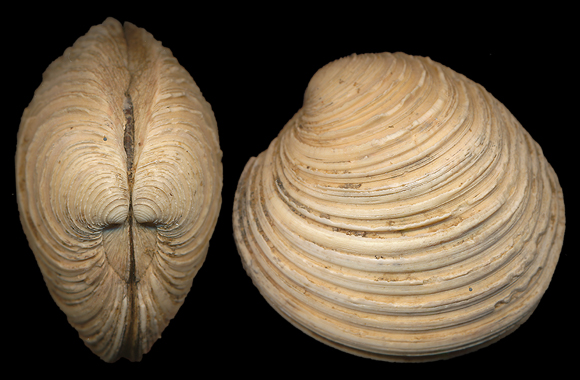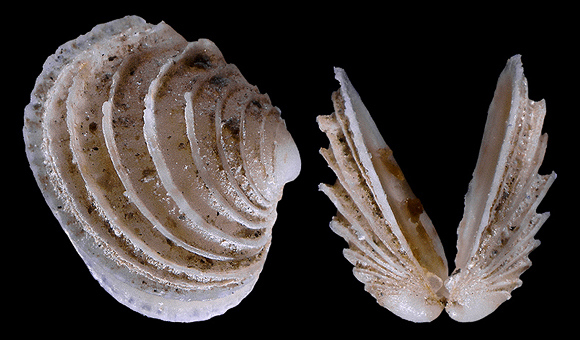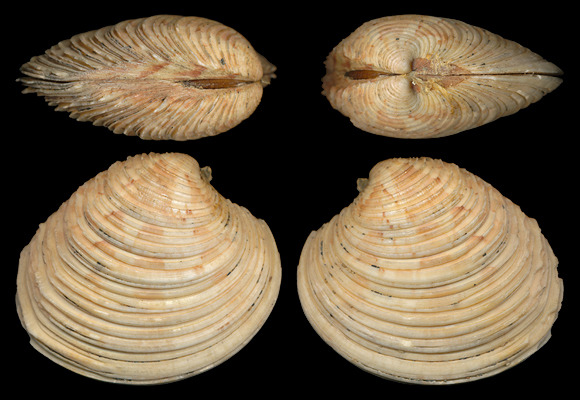
80-110m deep, off Málaga, Andalucia, S. Spain. 39mm.
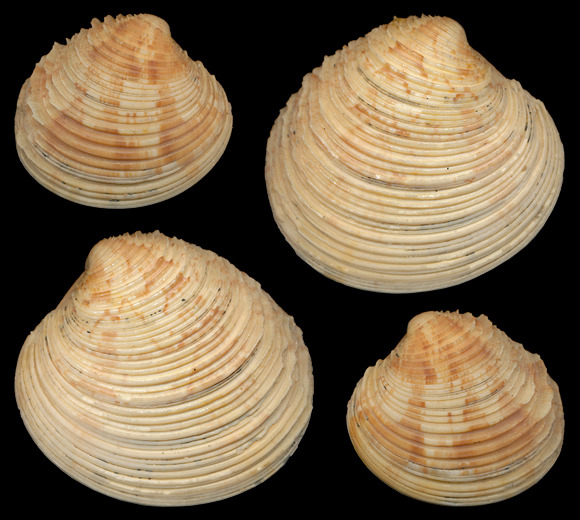
50-80m deep, Málaga. 28,6-30,5mm.
Many variants were described, of little interest.
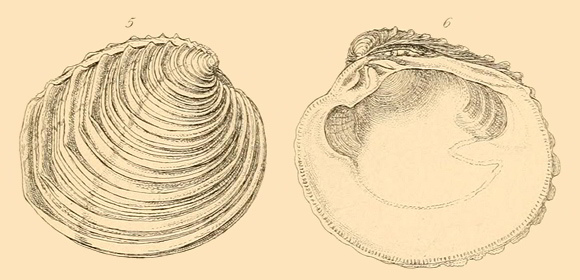
« This handsome bivalve being liable to certain modifications of form and colouring, has been subdivided into two species, casina and reflexa ; but as their distinctive features so merge into each other that it is often impossible to decide to which of them a specimen would belong, we have regarded the latter as merely a variety of the earlier known and more commonly diffused casina. » – Forbes & Hanley: A history of British Mollusca and their shells vol. I, London 1853, via BHL.
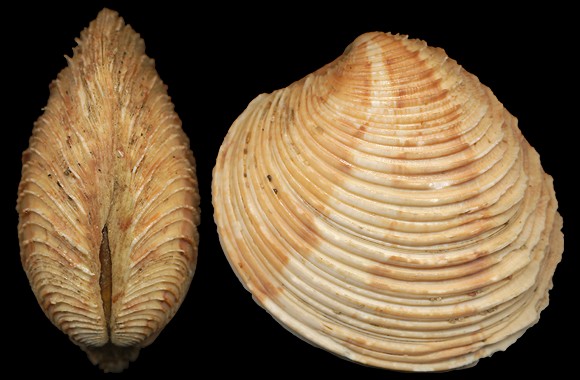
« The valves are extremely inequilateral, strong […] opaque, but moderately glossy, whitish, pale ferruginous brown, or cream coloured, and occasionally painted with from one to three rosy-red more or less interrupted rays, which are not particularly broad, and are often partially indistinct […]. The exterior is covered with very numerous concentric laminar simple (not fimbriated) much elevated plates, which are more solid depressed and closely set in front, bend towards the beaks in the middle, and become erect, or even deflected, behind. Their interstices […] are often subdivided by irregular concentric striae or incipient lamellae. » – F. & H.: op. cit.
30m deep, on sand, Málaga. 36-37mm.
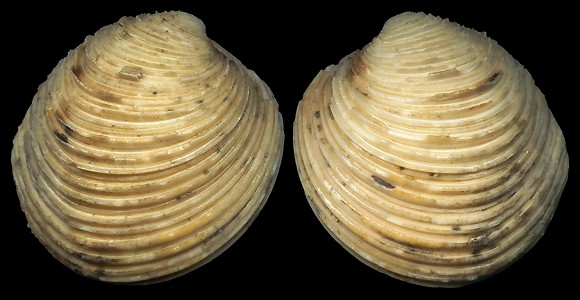
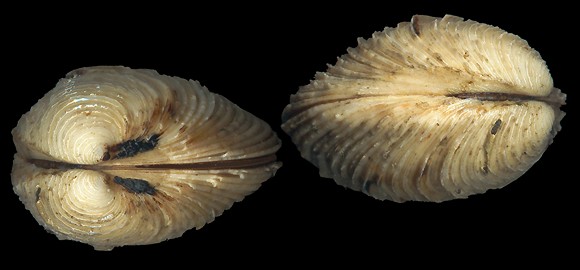
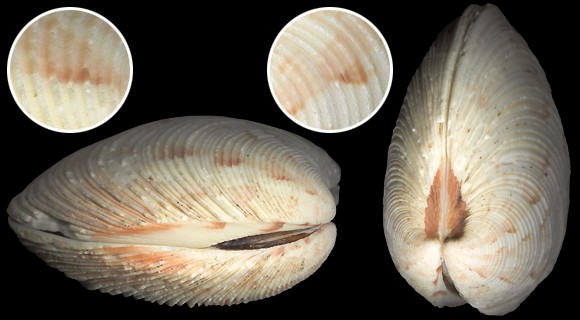
« The umbones lean remarkably forward, but are not by any means prominent ; the beaks are acute and distinct. The ligament, which is sunken and moderately large, occupies about one-half the length of the not very profound dorsal excavation or lozenge, whose shelving and subequal sides are either colourless, or only irregularly painted. The lunule is rather short, and often rufous. The interior is of an uniform whitish hue ; the muscular scars are large, and the pallial sinus rather small and abbreviately linguiform ; the basal margin, which is very broad, is strongly but finely and very closely crenated. Besides the three very divergent teeth (of which the central, by far the largest, is subbifid in the left valve), there is a minute anterior denticle at the lower part of the hinge margin in the left valve, and a corresponding indistinct socket in the right one. » – Forbes & Hanley: op. cit.
15m deep, Cagliari bay, S. Sardinia. 48mm. Flat.
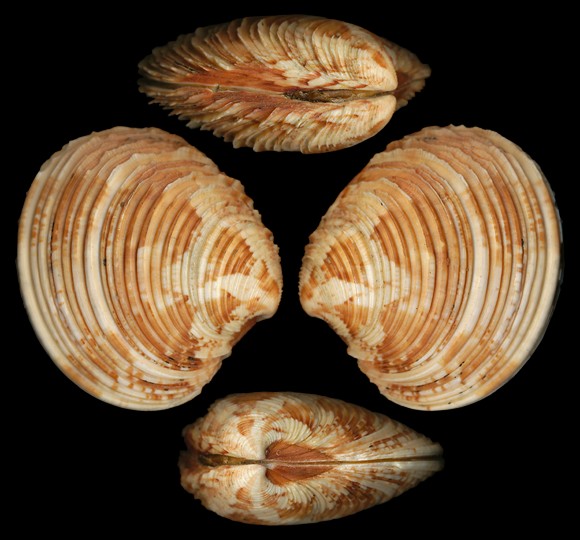
15m deep, Almería, Andalucia. 40,5mm.
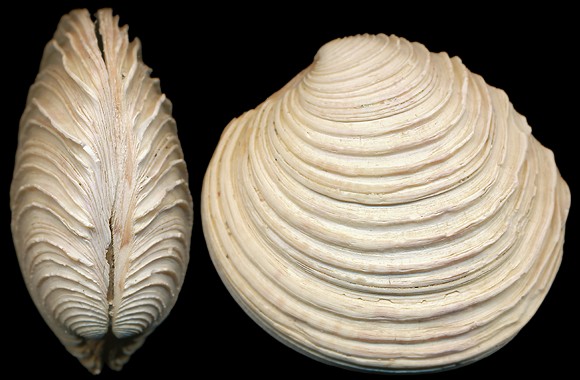
Variant “albina” collected at low tide, on sand, Shell beach, Herm island, Channel islands. 29mm.
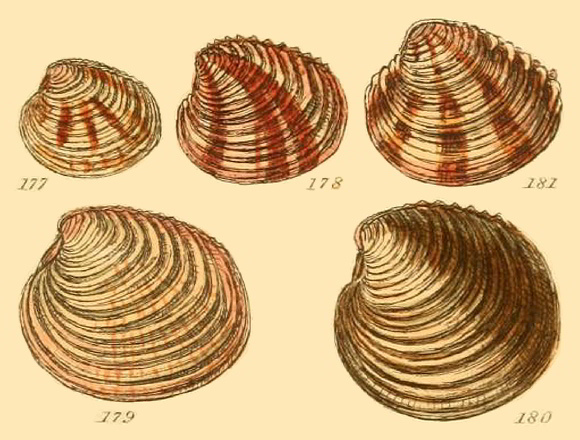
Thesaurus conchyliorum vol. II, London 1855.
« The laminae are very irregular, closely reflected and thickened the greater part of their length, but more open at the back of the shell, which is more distinctly truncated. The species also varies from being nearly flat, to attaining a thickness almost equal to its length. British, Scandinavian and Mediterranean seas. The specimens fig. 178, 180 are from Senegal. »
Figure 181 shows a Venus rosalina Rang, also from Senegal. The shape is very different and the ribs « are all closely decumbent and rounded, excepting at the sides, where they are irregularly interrupted and some of them thickened ; at the back some of them are produced into thick laminated lobes. »
Figure 181 shows a Venus rosalina Rang, also from Senegal. The shape is very different and the ribs « are all closely decumbent and rounded, excepting at the sides, where they are irregularly interrupted and some of them thickened ; at the back some of them are produced into thick laminated lobes. »
